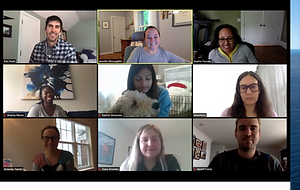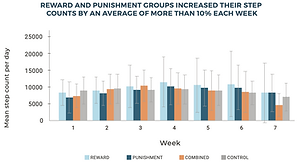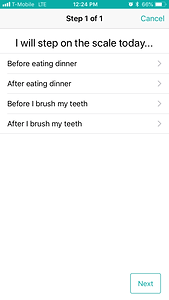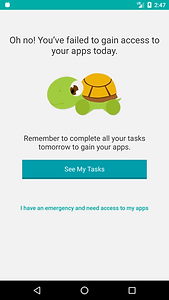READ
Articles about behavioral science

SELECTED PIECES
DEEP DIVES
Deep Dives are hand-curated collections of 10 time-tested articles and videos from around the web, hosted by Refind and curated by yours truly. Sign up to get one link per day, in the app or in your inbox. Think of it as a mini course in behavioral science.



It’s hard to know what to trust when it comes to the science of human behavior. From the psychology of work and time to happiness and goal-setting, this collection of insights from the experts will help you understand humans like a behavioral scientist.
When the world was hit with the global coronavirus pandemic, behavioral scientists worked quickly to understand what was going on in the minds of people all over the world and, more importantly, what they could do to help people behave in ways that serve the best interests of public health and their own well-being.
You probably know what it takes to stay healthy: eat well, exercise, and follow the doctor’s orders. And yet, we so often fail to behave in line with our best intentions. Insights from behavioral science can help get us one step closer to the healthy person we all want to be.
FORBES ARTICLES
As a contributor for Forbes in Leadership Strategy, I apply the findings of behavioral science to work and well-being.


These sixteen leaders are redefining what it means to be an innovator. From uprooting systemic inequities to enabling paradigm shifts in research methods, from connecting with patients to designing delightful experiences, they are the ones making a difference in healthcare.
The growth mindset has gained popularity in education and work environments where it is touted as the solution to cure all organizational ills. However, recent research shows that such claims are overstated, leading to ineffective spending.


The pandemic pushed healthcare to flip the default from in-person to remote care, a “digital first” transition that has resulted in gains in both efficiency and effectiveness for patients and health systems.
To get from rhetoric to results, behavioral science recommends two approaches for a diverse workforce: weed out bias that inevitably pervades judgment, and intentionally correct for the bias that seeps in despite our best vetting efforts.


Return to the office post-pandemic? Not so fast! Research shows the optimal balance of remote and in-person work at 60-80% of work outside the office. With pros and cons to working remotely, the future has both remote and in-person time.
To promote gender equity in the workplace, organizations can actively destigmatize the male caregiver role with salient exemplars and adopt policies that support fathers to help them care for their families.


All humans rely on categories to get through the day. And while the bias that stems from this pattern recognition can lead to prejudice and discrimination, we can design systems to correct for these errors.
You wouldn’t be blamed for any enthusiasm around leaving 2020 behind. But before you welcome 2021 with open arms, here is a review of how behavioral science played into the major themes of the year.


Leading behavioral scientists share what they are working on, their motivations and challenges, and advice for researchers and innovators in healthcare in a series of short, insightful and fun conversations.
When life happens and things don’t go quite as planned, you may stray from your diet and fitness goals. Use the fresh start effect to get back on track, leave the “old quarantine you” behind and become the new and improved version of yourself.


In a time of uncertainty and precaution, social norms have been rewritten with the new normal of physical distancing and staying home. The spread of these new norms can be explained by two primary forces: the social approval of positive behavior and the social disapproval of negative behavior.
It’s not news that handwashing prevents the spread of disease, from the common cold to the novel coronavirus. But it might take some creativity to transform our best intentions to keep our hands clean into the act of regular handwashing. Behavioral scientists weigh in on strategies to do just this.


In her Science of Well-Being digital health program, Professor Laurie Santos recommends practicing and tracking your signature strengths, savoring, gratitude, kindness, social connection, exercise, sleep, mindfulness, and time affluence.
With the daily commute as the most miserable part of the day, you are likely looking for a way to minimize your daily distress. The key to a happy commute? Tap into the benefits of relativity, setting a reference point that you can compare your situation against.


When the Business Roundtable announced its shift away from maximizing shareholder value, it did so to include important stakeholders like employees and supply chains. But research predicts another benefit: it may lead organizations to make more ethical business decisions that benefit shareholders.
Make a positive, lasting impression on your interviewer with the peak-and-end effect, leveraging the right timing to get the most out of your standout moments.

By framing your goals with emergency reserves, or goals with slack, you can both aim high and forgive your slips.
PATTERN HEALTH ARTICLES



Patients using the Pattern Health platform have long had the option to care for a virtual turtle (or a meter that simply tracks their daily progress), but we have exciting news: They can now choose from one of four virtual pets!
This white paper presents the application of the Friction and Fuel framework as a technique for helping patients manage their chronic conditions. Through research conducted with heart failure patients using mobile app interventions, we demonstrate how a behaviorally-informed approach can help patients effectively manage their health.
Many digital health programs fall short of having an impact because they focus on a narrow set of metrics: getting users to engage in low-impact activities that may boost engagement but fail to achieve important health outcomes. That’s why it’s important to design digital health programs for engagement and behavior change.



Achieving our long-term goals (like losing weight) often require us to succeed at many short-term goals over time (like staying under a certain calorie limit each day, or keeping up a daily exercise routine). But is it more motivating to focus on our long-term goals (emphasizing the outcome of our hard work), or to focus on the many short-term goals along the way (emphasizing the hard work itself)?
It can be a challenge to persist at our long-term goals (like getting fit) when we fail at our short-term goals (making it to the gym three times a week). Setting goals with ‘emergency reserves’ can help us stay motivated and achieve our goals in the face of short-term lapses.
At Pattern Health, we’ve noticed that our bonds with partners have strengthened since the start of the novel coronavirus pandemic. This observation is consistent with research in behavioral science showing that acute stress and pain can cause people to be more cooperative and prosocial.



Behavioral science is incredibly complex, but it’s possible to use the two simple concepts of friction and fuel to make a big difference in behavior change. You can decrease friction and add fuel to make desired behaviors simple, salient and appealing — and, importantly, more likely to actually happen.
Like Aesop’s grasshopper, we aren’t always successful in the behaviors we need to do NOW to reap future benefits. But since we live in the present, we need to find ways to make those behaviors more attractive when it counts. Reward substitution is one way of adding fuel behaviors to make them more likely to happen.
Small barriers can be a BIG deal. Every tiny little step can be *the step* that prevents someone from achieving their desired health behavior. Here’s my adventure trying to make a routine appointment with a primary care physician (Spoiler: it doesn’t go too smoothly).



You feel like your beliefs propel your actions forward. And yet, there is something even more influential over your behavior than your own beliefs: Your perception of the beliefs and behaviors of people like you. Pattern Health employs the power of social norms to help patients get closer to their desired health behaviors.
Support from friends and family can have a substantial buffering effect on your health. The natural tendency for people to encourage others is leveraged in Pattern’s Care Circle, where patients both give and receive support.
Social connections can bring fortitude to our lives, and social media is just one of the many ways we interface with our networks. Pattern Health leverages social media to pull in support through patients’ networks and promote health behavior.



You precommit to a wide variety of things in your life, but rarely your health. Signing to precommit to a pattern unlocks this missed potential, helping you better understand and act on your care plans.
We often hold vague notions about what we want to do for our health. We say we want to exercise more, eat healthier or stick to the doctor’s orders. But it’s not often that we put those desires into concrete action plans. And yet, we would be so much more likely to succeed if we did.
Attaching a consequence to the completion of a goal (punishment for failure or reward for success) can help people achieve their desired behavior. With App Interrupts, if you fail at your commitment, you lose access to your apps.



Today’s senior citizens are more tech savvy than ever. From connected homes to voice-enabled devices, smartphone innovations are making their way into the golden years — just in time for seniors to take advantage of digital health technologies when they bear the most potential.
Most people’s resolutions fail, but yours doesn’t have to. This year, make behavioral science fueled plans instead of New years resolution, and join the special club of individuals who last beyond February.
Setting goals and sticking to them is easier said than done. With our goal-setting guide, we lay out the steps to making it just a bit less difficult.



We tested a points-based financial incentive system where participants could earn points, lose them, or both gain and lose them.
We investigated whether implementation intentions could be a useful tool to help patients step on the scale on demand.
We wondered whether we could use a novel commitment device to help people commit to taking their medication.

FEATURED IN
I've been featured in books and articles in one way or another. Here are some of those pieces.

AND MORE
I'm shocked that you've gotten so far down this page!
Here are even more articles that I've written over the years.



